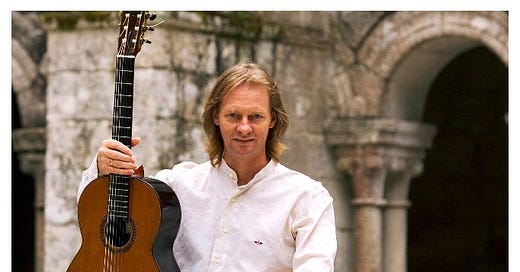December 2: Miscellaneous and reconstructed works (Various Artists)
A hodgepodge as we approach the end
This Bach project began on a whim, with no master plan for listening or writing. In the early days, I flitted around the catalog, posting frequently and covering less than an hour of music at a time. Unsustainable. As in business, it would have benefitted with structure from the get go.
As the weather warmed, listening gaps widened, and my playlists grew longer. I barreled on blindly before finally setting up a formal queue in August so that I could finish the catalog by year-end.
But I was always impelled to finish what I said to the world I was planning to do. It’s annoying that declaring my intention was a meaningful impetus to following through. Why should that work? I should be able to just have the internal motivation to do anything I want!
Perhaps it’s similar to why we get married in front of the people we care about — in celebrating our commitments publicly, we make it more difficult to renege on them.
Throughout the year, I developed a mishmash of skills to keep these posts cranking while balancing work and parenting, plus cooking, non-Bach listening, sweating politics, managing a family health emergency, and reading the Old Testament. (I’m hoping to close Deuteronomy as we Auld Lang Syne — I’m most of the way through Numbers.)
Here are some things I got better at throughout the year:
Scraping YouTube with semi-licit web tools.
Listening actively while exercising. (There are only so many hours in the day.)
Throwing away large chunks of text with little regret.
Gliding through the testy comments.
Celebrating the many things I like more than complaining about those I don’t.
Thanksgiving has passed, I’m so glad to have spent so much of my year with Bach, and with you readers.
This week’s post will sweep up all the miscellaneous stuff I missed along the way: choral works, lute pieces, sonatas for viola de gamba, and canon exercises. (For my die-hards, here’s a link to my dog’s breakfast of a tracking spreadsheet.)
Here’s what was left, including some pieces of dubious provenance: BWV 118, 216, 569, 573, 725, 823, 1000, 1013, 1021, 1025-29, 1039, 1044-5, 1059, 1063, 1071, 1082-3, 1086-7, 1127, and the Canons (BWV 1072-1078).
Highlights below:
I hadn’t known that the GOAT Martha Argerich recorded a Bach album besides the one I covered in February; these are duets with the excellent cellist Mischa Maisky. It doesn’t soar in same way as her solo album does, but there are great moments. Listen to the duo trade magic trills in the first movement of the Sonata in G, BWV 1027:
Isabelle Faust turns up the heat with the Bach-Collegium in the D Major Sinfonia BWV 1045 (plus a preview of the violin pyrotechnics we’ll hear again in the Chaconne next week):
Bach repurposed one of his greatest melodies for the D Minor Concerto for Oboe (BWV 1059) — we first heard this back in January, as part of Cantata BWV 35.
The Scottish/Spanish guitarist David Russell’s playing is always fresh and musical, his stellar technique taking a back seat. Here is an excerpt from the Partita in A Minor BWV 1013, perhaps originally written for solo flute:
The G Major Sonata BWV 1021 should be better known, especially its finale — great playing from Andrew Manze, Richard Eggar, and Jaap ter Linden:
An aching duet from BWV 243 Tilge, Höchster, meine Sünden (“Lord, cancel my sins.”) This even feels a little proto-Brahms-y to me (Helmuth Rilling, conductor):
YoB hero Andres Segovia plays the perfect Bach piece for guitar perfectly. Here’s a bit of pedal tone fun in BWV 1000, which Bach adapted from the G Minor Violin Sonata:
The violinist Rachel Podger and her period instrument colleagues are busy bees in the opening movement of BWV 1044, a triple concerto in A Minor:
A surprising end to the Alla Siciliana movement of Concerto for Three Harpsichords in D Minor, BWV 1063 (Hamburg Philharmoniker):
Let’s close as simply as possible, with one of the hypnotic canons. BWV 1076 is perfect, layer on layer, stacked up and peeled away:






I await to see which Chaconne recording(s) you will share with us next time...
This entry captures everything I’ve loved about this project: the honesty, the range, and the unpretentious depth. There’s something quietly heroic about finishing a sprawling artistic commitment in a year filled with chaos, caregiving, and Numbers. That you did it without a rigid roadmap — just sheer curiosity and grit — makes the result feel even more alive.
I was especially struck by your reflection on public declarations as a force for follow-through. That paradox — needing outside eyes to stay true to our inner compass — resonates deeply. Maybe it's less about external pressure, and more about witnessing. Like we invite others to hold the thread when we know the journey might fray.